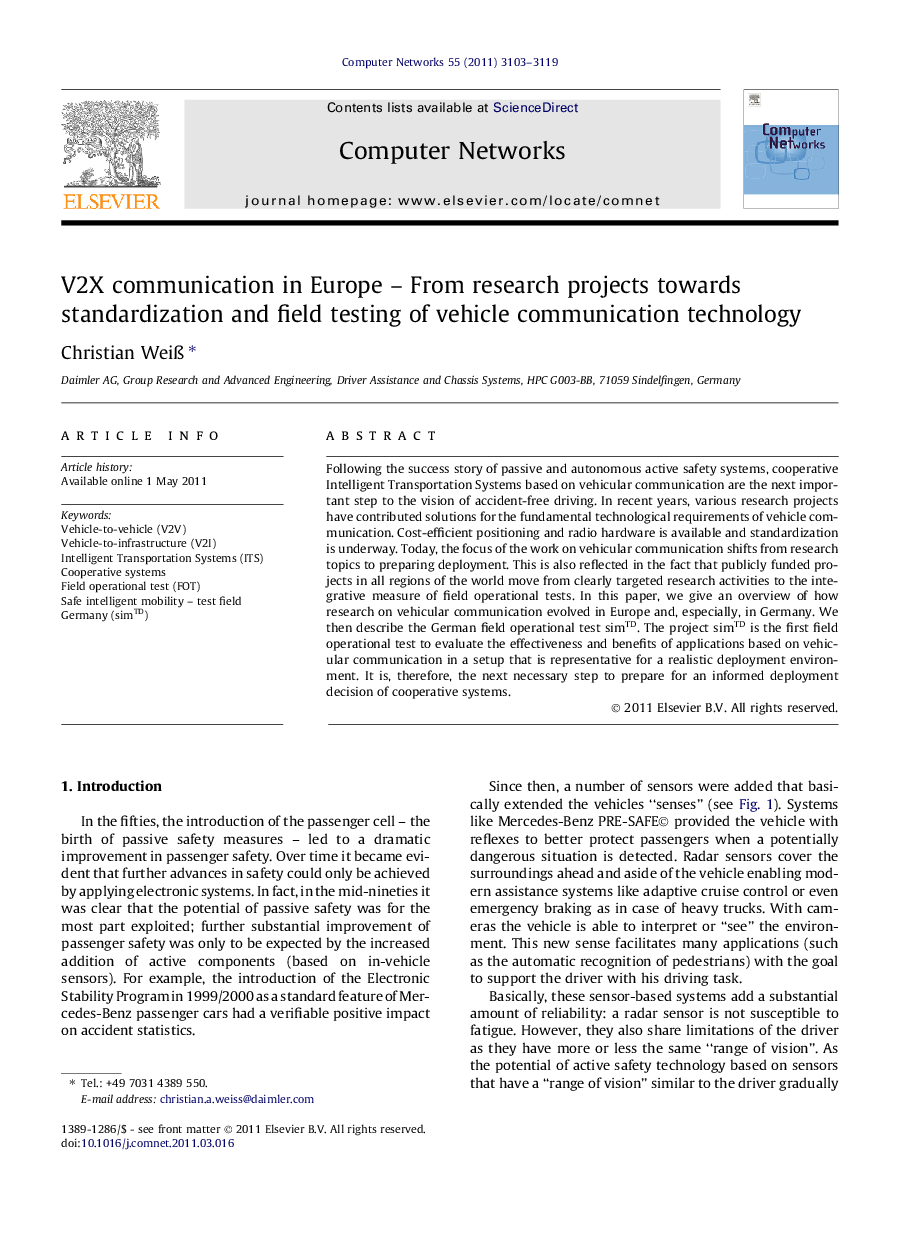| Article ID | Journal | Published Year | Pages | File Type |
|---|---|---|---|---|
| 452189 | Computer Networks | 2011 | 17 Pages |
Following the success story of passive and autonomous active safety systems, cooperative Intelligent Transportation Systems based on vehicular communication are the next important step to the vision of accident-free driving. In recent years, various research projects have contributed solutions for the fundamental technological requirements of vehicle communication. Cost-efficient positioning and radio hardware is available and standardization is underway. Today, the focus of the work on vehicular communication shifts from research topics to preparing deployment. This is also reflected in the fact that publicly funded projects in all regions of the world move from clearly targeted research activities to the integrative measure of field operational tests. In this paper, we give an overview of how research on vehicular communication evolved in Europe and, especially, in Germany. We then describe the German field operational test simTD. The project simTD is the first field operational test to evaluate the effectiveness and benefits of applications based on vehicular communication in a setup that is representative for a realistic deployment environment. It is, therefore, the next necessary step to prepare for an informed deployment decision of cooperative systems.
